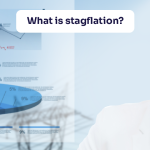The Bank of Japan (BoJ) made a historic decision on July 31, 2024, by raising its key interest rate to 0.25% from around zero to 0.1%. This marked a significant departure from its ultra-loose monetary policy, which had been in place for nearly two decades.
Japan has been grappling with deflationary pressures for several years. In an attempt to stimulate economic growth and combat deflation, the BoJ adopted a negative interest rate policy in 2016. This meant that banks were charged for holding excess reserves with the central bank, incentivising them to lend more money to businesses and consumers.
However, despite years of ultra-loose monetary policy, Japan struggled to achieve its inflation target of 2%. While the economy avoided outright deflation, it remained stuck in a low-growth, low-inflation environment.
Several factors contributed to the BoJ's decision to abandon its ultra-loose monetary policy:
The BoJ's decision has far-reaching implications:
While the rate hike marks a significant shift in Japan's monetary policy, it's important to note that the central bank is still maintaining an accommodative stance. The BoJ has emphasised that the rate hike is a gradual adjustment and not the beginning of a tightening cycle.
The success of the rate hike in achieving BoJ's objectives of price stability and sustainable economic growth will depend on various factors, including global economic conditions, domestic consumption, and business investment.
The BoJ's decision to abandon its ultra-loose monetary policy is a watershed moment for the Japanese economy. The long-term implications of this shift will be closely watched by investors and policymakers around the world.

Revisiting the Gold-Silver Ratio Amid Silver's Outperformance
2 min Read Dec 22, 2025
Midcaps: Sweet Spot or Danger Zone? | What HSBC MF’s Cheenu Gupta Thinks | Ventura Spotlight
2 min Read Dec 17, 2025
Understanding Option Pin risk near expiry
2 min Read Dec 12, 2025
EPS in the Stock Market
2 min Read Dec 12, 2025
What is stagflation?
2 min Read Dec 10, 2025